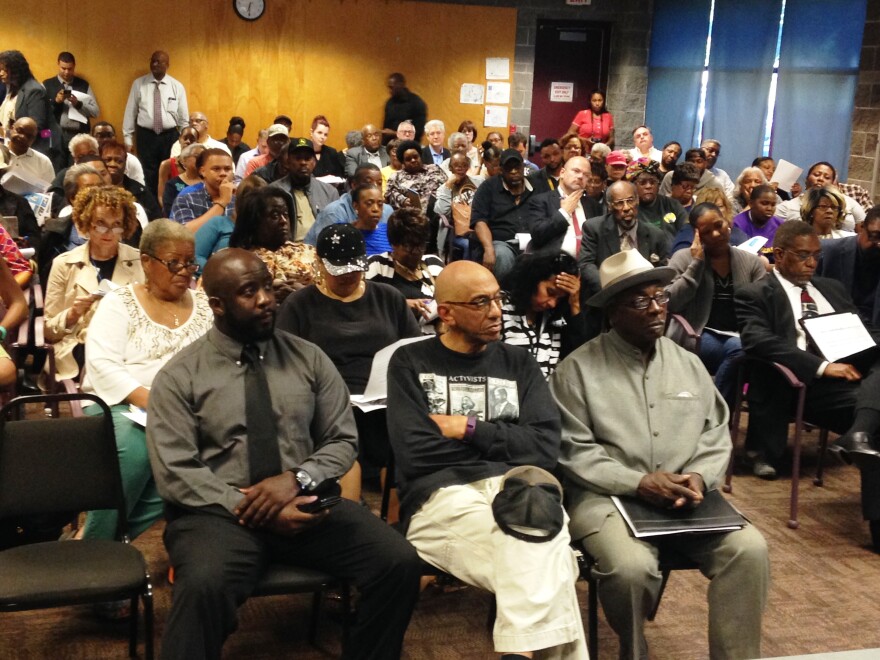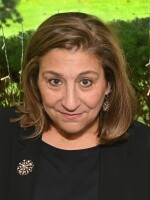The historic district at 18th and Vine in Kansas City, Missouri , a half mile east of the flourishing Crossroads Arts District , is itself at a crossroads.
Again.
The city will soon hold hearings on a $28 million dollar package of renovations. Projects include improvements for the Negro Leagues and American Jazz Museums, the Kansas City Friends of Alvin Ailey and beautification projects.
Major League Baseball is also set to break ground on a multimillion dollar urban youth academy at the north edge of the district.
All the buzz is creating both excitement and concern.

A direct link to history
18th and Vine is in Jason Parson’s DNA. Literally. He's the grandson of the great Kansas City pianist and bandleader, Jay McShann, one of the names most closely associated with the Kansas City sound.
When Parson was considering where to open his public relations business, he says the 18th and Vine district "chose him." It wasn't a hard decision to locate on 18th Street, just west of Vine.
Growing up hearing his grandfather's stories of traveling the world as a jazz musician, Parson also lived with McShann toward the end of his life.
"He'd get up and 1 a.m. or 2 a.m. and jump on the piano and play," Parson says. "I'm not going to say I didn't appreciate it, but I had to go to work the next day!"
It wasn't only an appreciation for music that Parson learned from his grandfather. He learned about community and supporting your friends. Jay McShann had a number of side businesses, including a limousine service. He helped his friend, Lawrence A. Jones, build what became one of the local African American community’s largest funeral homes.
"He would loan his limos to Jones because all of them worked together to support each other," Parson says. "Ollie Gates, all of those guys, they were friends. And I tell these guys today, we have got to start working together like that."
Jazz and worship

Churches have long been an integral part of life in the jazz district.
At a recent Sunday service at Centennial United Methodist Church on 19th and Woodland, some longtime residents of the area talked about how musicians would find their way to church after playing music all night at the after-hours Mutual Musicians Foundation.
74-year-old Virginia Thomas remembers when the church choir sang to the wailing sax and jumpin' piano of jazz greats.
"The church was open all the time," she says. " You could come at 7 a.m. and they'd be here, playing."
Preserving the past, going into the future
So why has it been so challenging to preserve this compelling legacy?
Even U.S Rep. Emanuel Cleaver, who as Kansas City Mayor spearheaded the district’s comeback in the ‘90s, admits the millions of dollars in investments haven’t met expectations.
But he says people need to understand the impact of segregation.

"It’s important for taxpayers to know that up until the late 1960’s, even into '70s, African-Americans couldn’t live south of 27th Street," he says.
After public accommodations laws passed, many African-Americans were able to move out of the community and invest elsewhere around the metro — Johnson County, Lee's Summit, etc.
"It's a good thing," Cleaver goes on, but it has been hard for the district to recover from the loss of resources.
A new day?
In the neighborhood today, it would appear things are happening.
Kansas City is enjoying a new interest in downtown life. The Crossroads Arts District flourishes less than a mile west. The buzz is people want to "live, work and play" in their communities — especially young people.
At 18th and Vine, a new generation of political, business and cultural leaders is working together. They meet monthly to talk about programs and plans.
Emiel Cleaver (yes, he's Rep. Cleaver's son) is the director of operations at the Black Archives of Mid-America, housed in a massive, stone building. The building formerly was used by the Department of Parks and Recreation. It houses oral histories, photographs and research materials on African-Americans in the Midwest.
The young Cleaver says the vision for the future of 18th and Vine must incorporate this history, but must also cater to younger tastes.
"This is a jazz town," he says, "but a lot of younger people don’t listen to jazz, that’s just a fact."
He says to get them down to the district you have to offer other genres like R&B and hip-hop.
"Once you get young people here,"Cleaver says," they'll learn the music they like is all the grandchild of jazz."
In the meantime, The Blue Room jazz club packs crowds for concerts and it's hard to find a parking place when there's an event at the nearby Gem Theater. Recently-built apartments are almost all full.

At the first ever "First Friday on the Vine" last week, vendors sold art and jewelry. There was live music and someone teaching dance lessons in the lobby of the Jazz Museum.
A steady stream — mostly African-American — moved up and down 18th street. The weather was beautiful and there was a palpable feeling of excitement. People were dressed up.
Change is hard
At a contentious public meeting in the district earlier this week, city officials outlined plans for the new projects and improvements in the district. There were some heated remarks from residents who feel left out of the decision-making process. They say they support progress but want to help define what that looks like.
"It also has to be on the basis of maintaining cultural heritage and integrity," resident Archie Williams said after the meeting. Williams has lived in Parade Park, a housing complex at the north edge of the district, for 40 years.
"This is an American culture but we want to make sure it stays an African-American culture as well," Williams said.

Williams represents a sizeable voice of those who worry this latest round of improvements will, once again, bypass longtime local residents.
Their frustration is understandable, says 3rd District Councilman Quinton Lucas.
"Because for decades people saw that there wasn’t investment. Now that things seem cooler and lots of things are going on, there’s this fear that what’s being built isn’t being built for the population that lives there now," Lucas says.
If it’s not for them, then who is it being built for?
Is it for those like Lucas himself, a young African American who’s moved back to the newer apartments? Is it for the cultural and arts groups, or to create a retail destination with restaurants and shops?
And who’s going to decide?
These are the questions facing today’s leaders as they look toward defining what the iconic 18th and Vine district will look like in decades to come.
Laura Ziegler is a community engagement reporter and producer at KCUR 89.3. You can reach here on Twitter @laurazig or at lauraz@kcur.org






